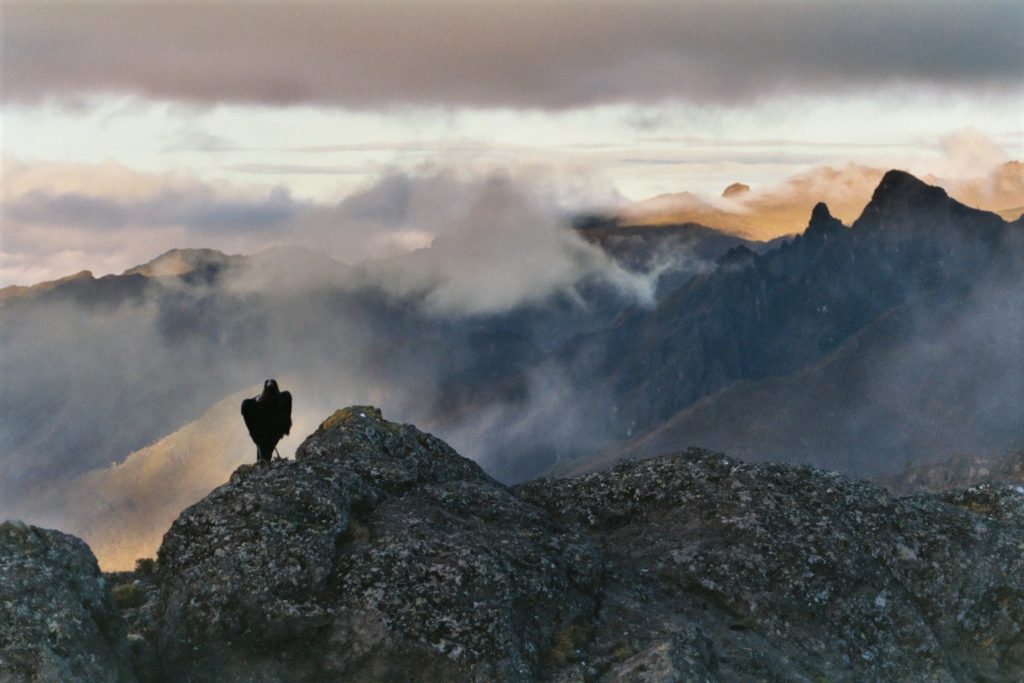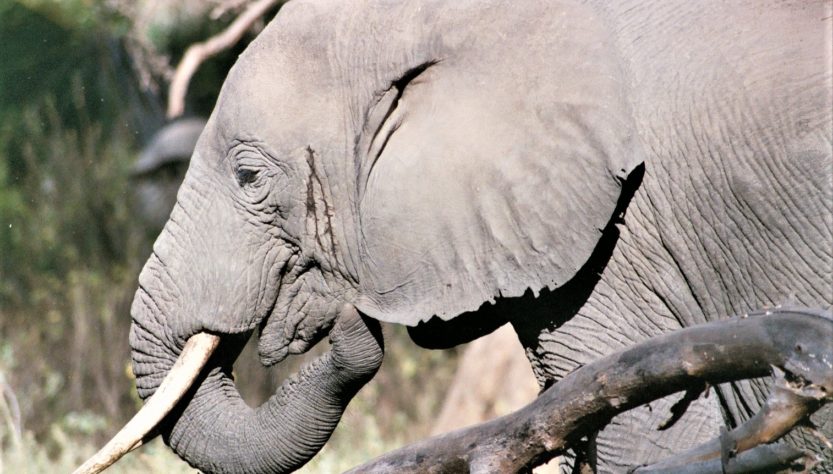It must have been late in the afternoon in the dense rainforest at our camp in Arusha National Park, on the slopes of Mount Meru, Tanzania’s second highest mountain. I was working as a tour leader for the British company ‘Explore Worldwide’. It had been a long but enjoyable day, the camp for my clients was set up and I think I was enjoying a few moments of solitude with nature, when one of my female clients came up to me with an interesting observation.
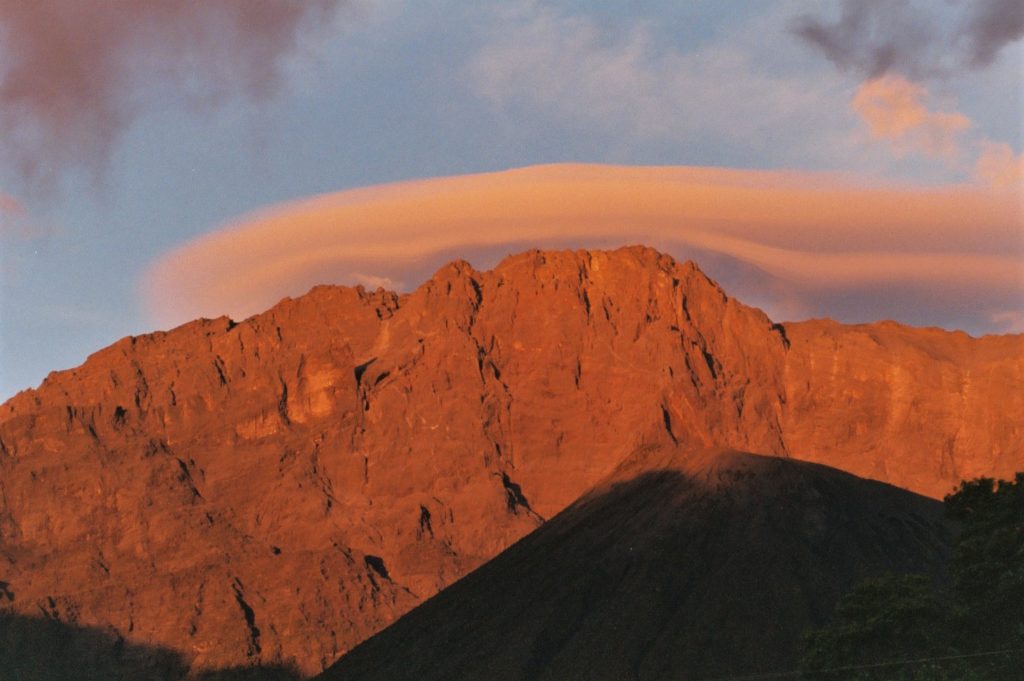
‘Errrr, Steve. Sorry, excuse me, but there are some elephants in the toilet! I really need to go!’
I was getting used to my life in Tanzania, leading people on hikes up Mount Meru and Kilimanjaro, -Africa’s highest peak- but nevertheless, this was a first by any standards. Curiosity as much as anything else got the better of me. I followed the lady to the rustic toilet ‘block’, a few ‘long drop’ toilets to check out the scene for myself. Sure enough, a large herd of elephants, huge adults and fumbling super cute calves had taken up residence, contentedly munching the lush grass in the cleared area around the toilets, talking to each other in deep rumbles and high-pitched, playful snorts. It was a wonderful scene and an experience of pure untamed Africa. Here at least, on the slopes of a sleeping volcano, nature still ruled.
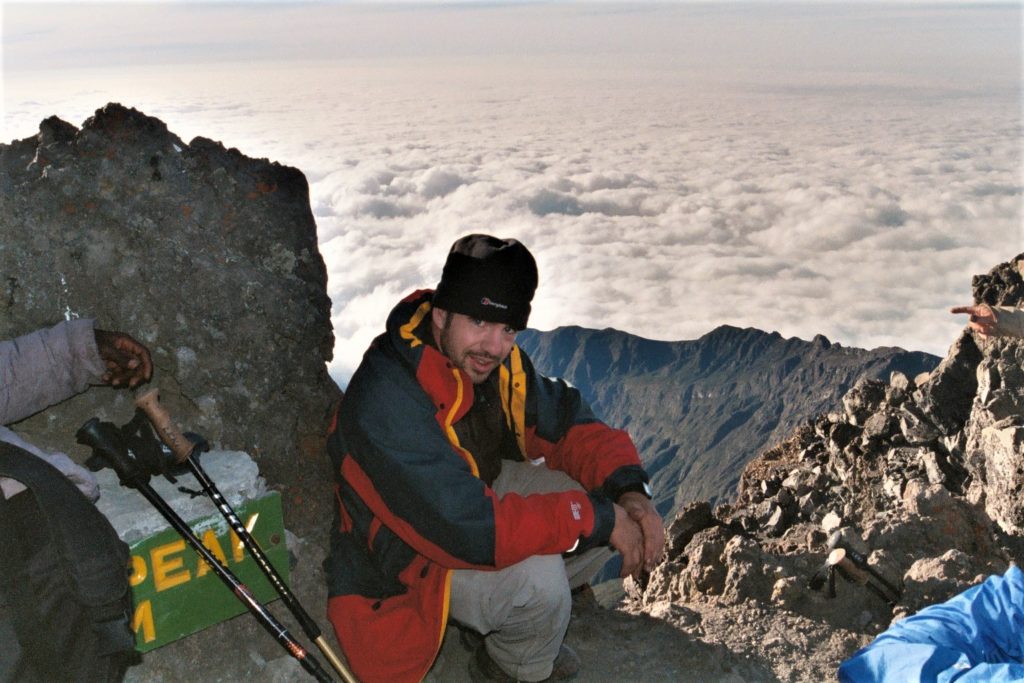
‘What do I do??’ asked my highly inconvenienced and uncomfortable looking client. I couldn’t help but find this amusing.
‘Well, I don’t think it’s a good idea to disturb them, do you?!’ I gestured at the elephants, 15 or 20 meters away in the clearing. These huge creatures, like living mountains themselves, could easily become bad tempered if they felt in any way threatened…that I knew well enough.
I shrugged. ‘You’re just gonna have to find a tree. Elephants have priority here. When the Elephants go, the toilets open again.’
The lady grudgingly took my advice, and after watching the elephants in awe for a few more minutes I wandered back to the camp and had a laugh about the scene with the camp staff and local guides. They, like almost all the people I worked with in Tanzania, were a good-humoured and helpful bunch. I was lucky to be working with such a wonderful crew.
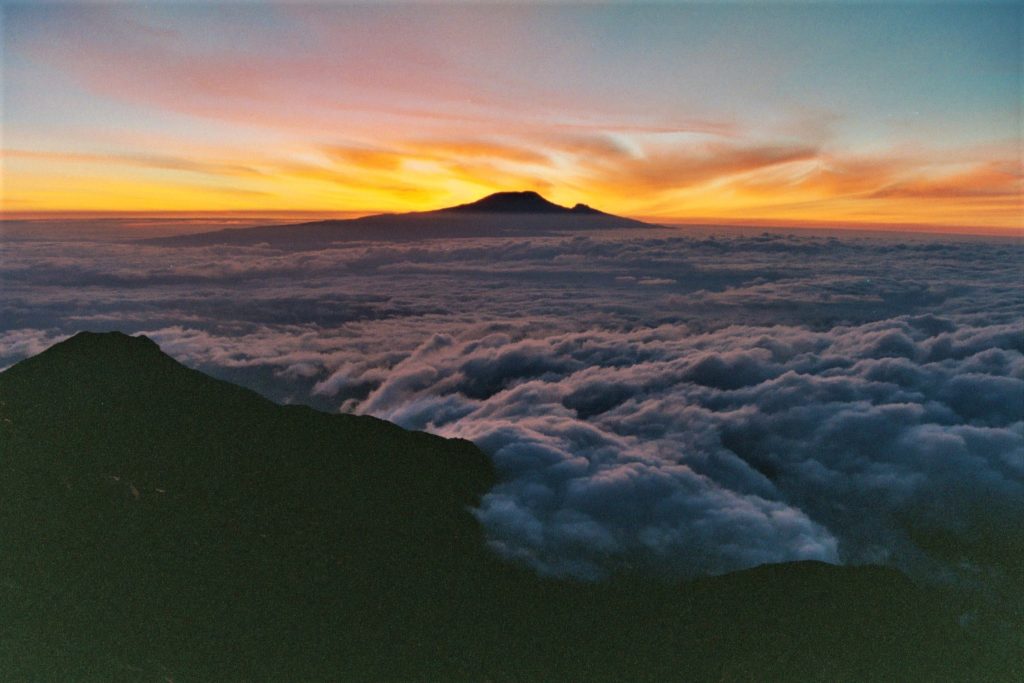
If asked whether I preferred this mountain, Meru, or leading trips up nearby Kilimanjaro, I’d always say Meru, which might surprise some. The park is much less visited than Kili. Everyone these days is obsessed with ‘the biggest’, ‘the tallest’. But to me Meru is far more beautiful. As the elephants demonstrated, the jungles, glades and swamps of Meru always seemed to be teeming with wildlife. Although Lions are no longer present, the lakes on the drive in to the park always seemed to be overflowing with buffalo, warthogs, giraffes and antelopes. The bird life is fantastic, martial eagles…crowned cranes.
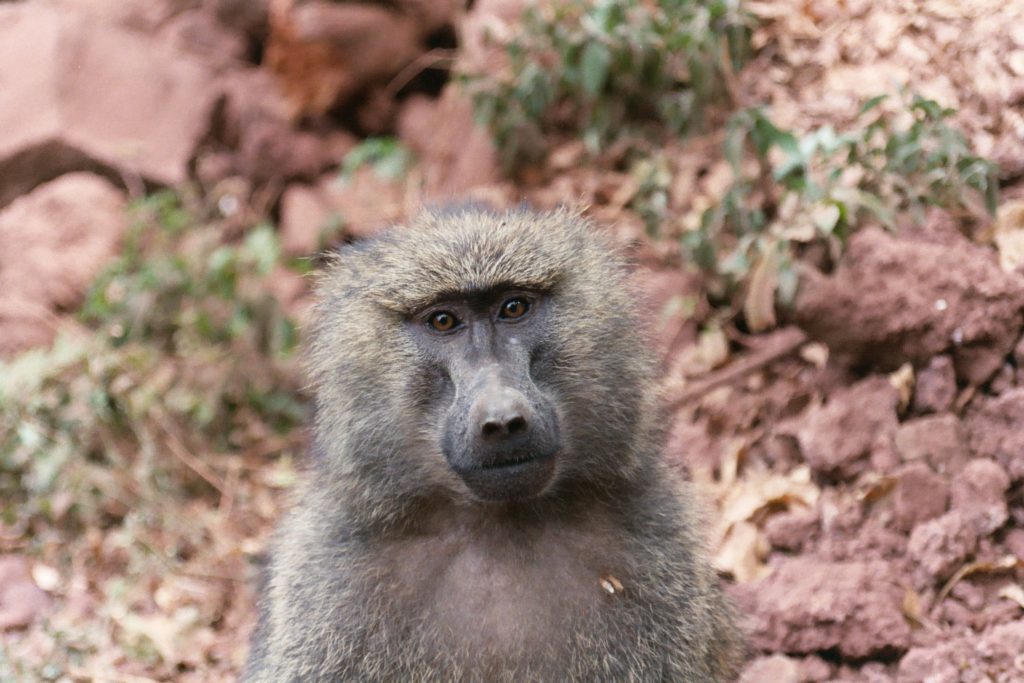
Mount Meru might not be as high as Kilimanjaro, but at 4566m it’s still as tall as some of the Alps highest mountains. The climb starts in lush rainforest, dripping with moisture, moving up past the tangled roots of giant fig trees. Black and white colobus and blue monkeys often crash through the trees above or cautiously observe the strange humans heading up the mountain.
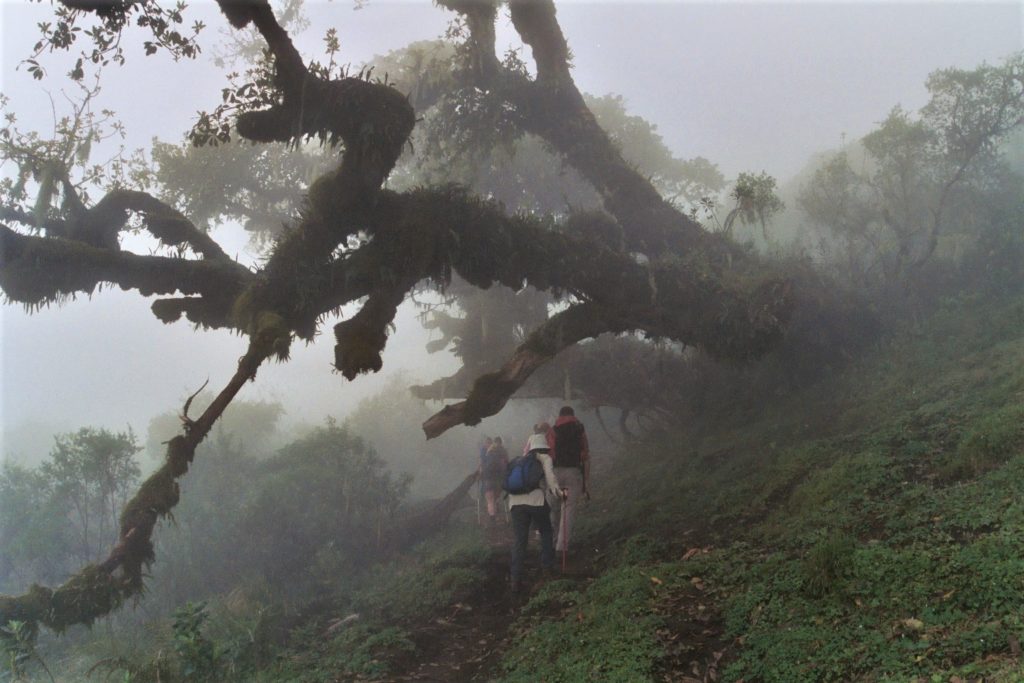
On the 4-day climb (up and back), the forest disappears at around 3000m and the final hike to the summit is inspiring, trekking along a vast precipice, a ridge where the ancient volcano must have collapsed in on itself. Staring into the abyss of ‘Meru Crater’, you’re met with the incredible sight of the ‘Ash Cone’, a younger volcano that rose out of the belly of its parent.
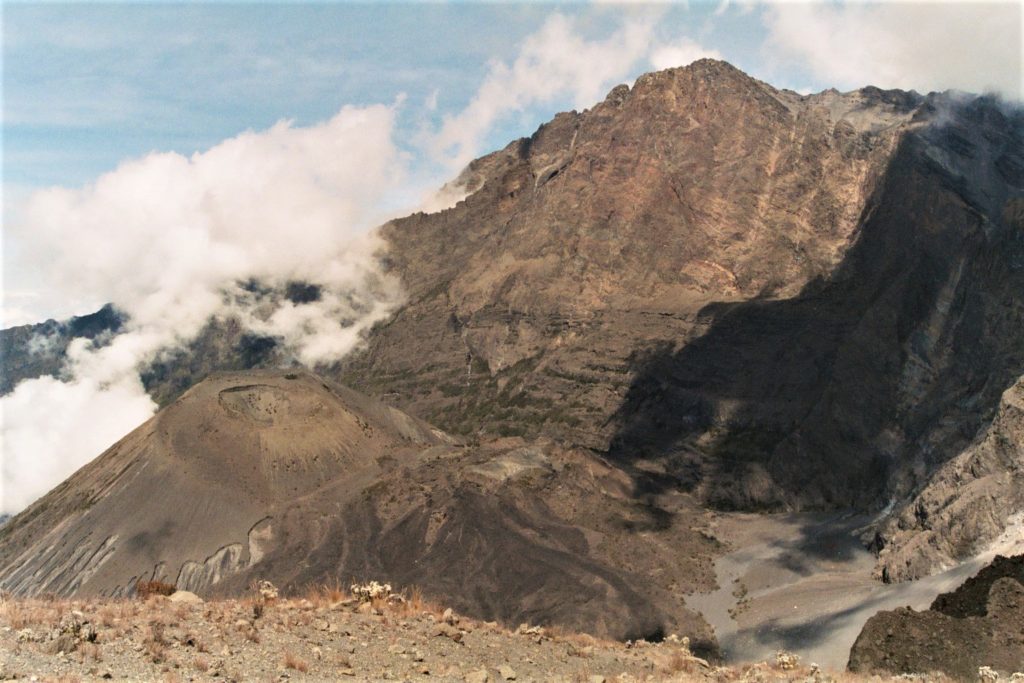
Sunrises over the crater are lovely. The vast volcanic walls turn a deep orange that looks like a Boris Vallejo fantasy painting and then, rising above the clouds, far to the east is the unmistakable form of Kilimanjaro, looking finer from a distance than she does close up- snow and ice on the Equator.
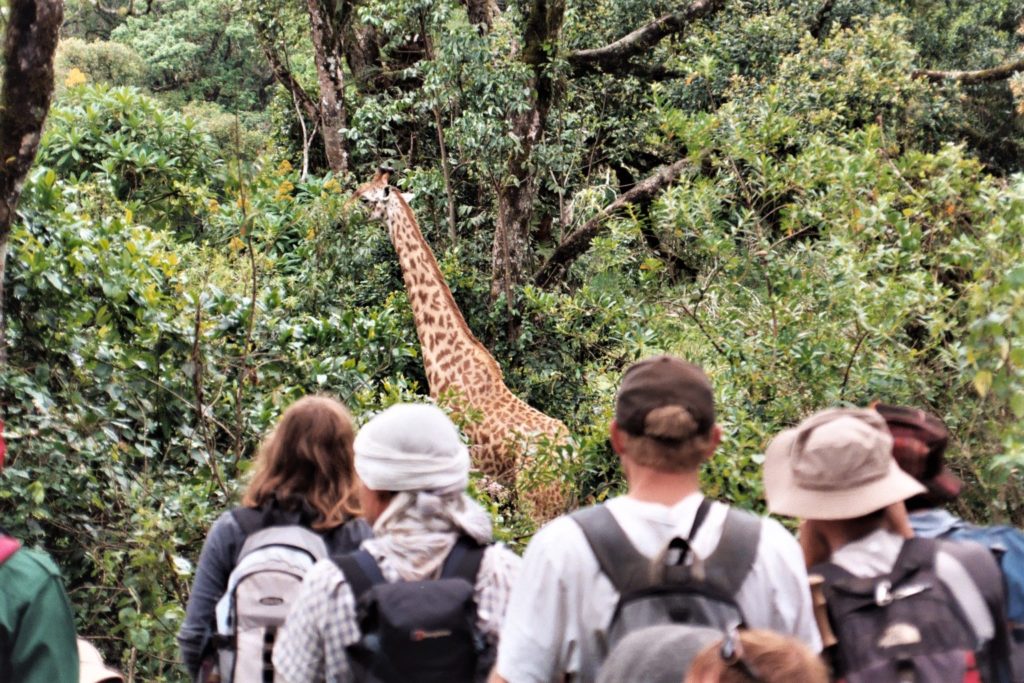
If you have the time while in Tanzania, the ascent of Mt Meru is a thrilling, wild and spectacular alternative (or addition) to the ascent of Africa’s highest mountain, and one that is easily accessed from either Arusha town or Moshi.
